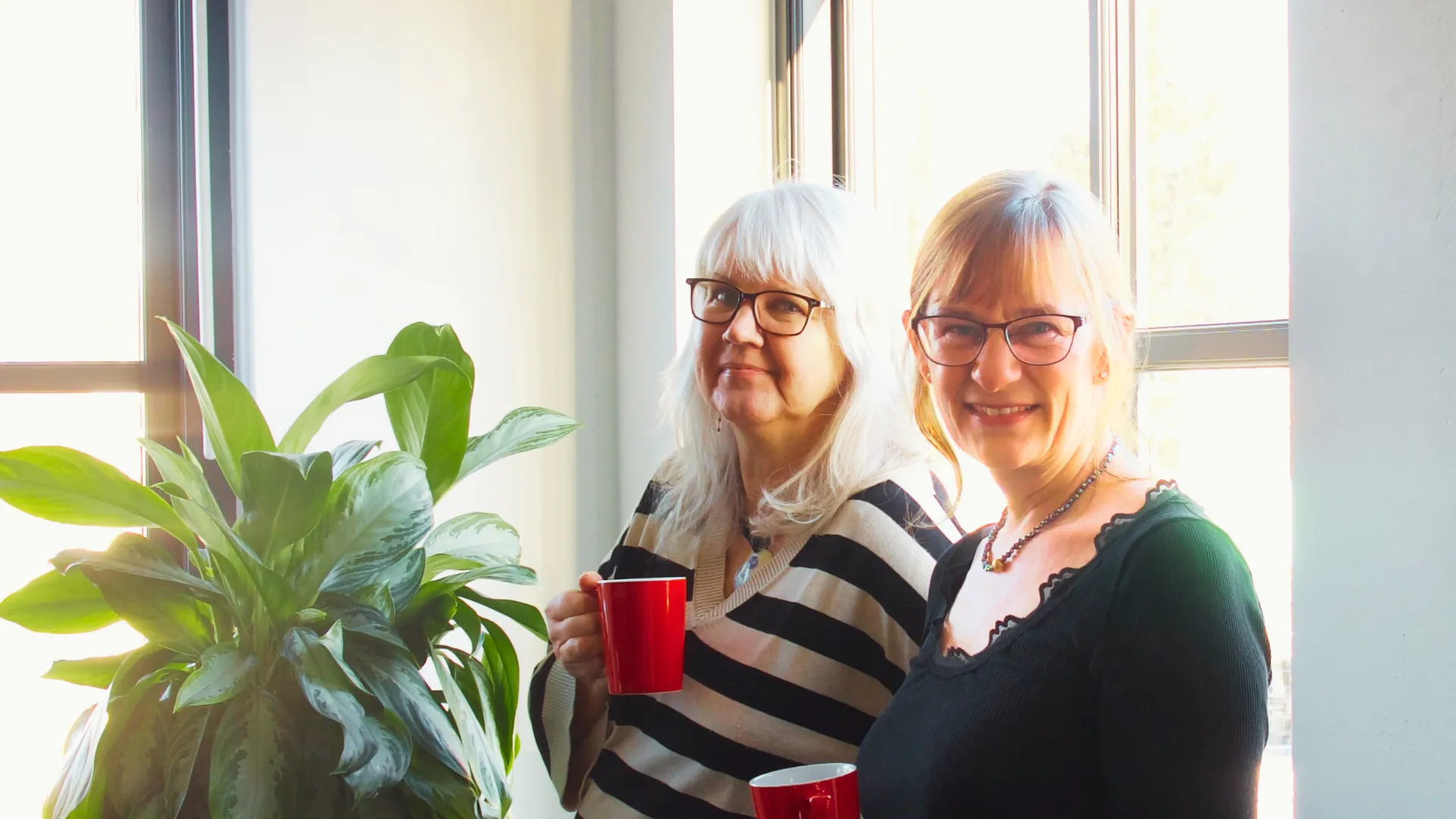
30 years at the intersection of technology and publishing
At Schilling, we are fortunate to have a wealth of experts with many years of experience.
This January, our Customer Success Manager, Gurli Kjærsgaard Madsen, and Business Expert, Elaine Rose Petersen, celebrated their 10th and 20th anniversaries, respectively – marking an impressive 30 years of combined experience.
But what has made the biggest impression on them?
We sat down with these two experienced professionals for five quick questions that took us far and wide – from Gutenberg to AI, royalties, digital sales, GDPR, and profit-sharing as a contract model.
What is the most exciting part of working at the intersection of technology and publishing?
Gurli:
I have always worked in the publishing industry, and it’s such an exciting field to be in. It is my personal passion – the culture, and the literary and creative aspects of the industry. To be able to develop and support the backbone of publishers and help more authors and publications come to life – to me that’s incredibly rewarding.
Elaine:
For me, it is definitely the enduring customer relationships and the development aspect. The publishing industry has been around since ……
Gurli:
Since Gutenberg.
Elaine:
Exactly! The way publishers have traditionally worked is now undergoing a massive transformation. Everything is up for debate. Publishers are in a race to stay ahead, and for me the challenge is to anticipate where the industry is heading and help our clients. What excites me most is supporting publishers in becoming even better by creating new opportunities for them and at the same time optimising their workflows.
Gurli:
Yes, I completely agree. It is incredibly fulfilling to work with our customers and drive industry innovation forward.
How have the needs of the publishing industry changed?
Elaine:
There are significantly higher administrative requirements today because of GDPR and higher data security. This means that publishers must have much better control over their data. More documentation must be stored securely, and there are increasing requirements for transparency .
Gurli:
I agree, but if I had to point out one specific change since I started, it would be the shift from whole numbers to decimals in sales. In the past, a sale was always a whole number. With digital sales, that’s no longer the case. Today, publishers work with sales down to three decimal places, for example when they sell streaming of e-books and audiobooks. This has made publishing much more complex and it has created a need for new technological solutions that can handle all the different publishing aspects – royalty calculations, for example.
What do you see as the biggest technological game changer?
Elaine:
A lot has happened over the years. When I look back at my 20 years in the industry, I would say that one of the biggest transformations has been the automation of contract circulation between publishers and authors. Although it’s not exactly a new thing, automated e-mails and digital signatures have saved a lot of time for publishers and made their work much more efficient. Just think of how much trouble it was with physical letters or courier services that shuttled contracts back and forth to get signatures – and if there were several authors involved, the process could take days – even months!
Gurli:
Yes, the automation of many work processes has really changed the game. Our Author Portal is a very good example. Here we have developed a unique platform for author relationship management that makes it possible for publishers and authors to communicate, share information, and have access to sales reports and both past and upcoming royalty statements – at any time.
What major changes have you seen in the collaboration with publishers over the past 10 to 20 years?
Gurli:
The biggest shift is that we are no longer just a supplier. Today, we must be a lot more agile and flexible, and this requires strong and close partnerships. The publishing industry is evolving very fast, competition is fierce, and publishers have to differentiate themselves. This means that it’s no longer enough to simply understand the industry; you must have a deep understanding of the business processes when you want to tailor solutions and develop new functionality that streamlines operations and reduces costs.
Elaine:
Yes, partnerships have become essential because technology is now an integrated part of the business strategy for publishers. As a partner, we have to stay ahead of the game with new functionality. Today, a contract is not just a contract – there are many different ways a publishing contract can be structured between a publisher and an author, and these agreements are crucial for business growth. This means that to be competitive publishers must have flexible and advanced solutions – they might for example offer profit-sharing as a contract model.
How do you see the future of the publishing industry?
Elaine:
Well, we can’t ignore artificial intelligence. AI will reshape the way publishers operate, both in terms of their value chain and publishing lifecycle management. AI will play a role in everything: administration, control, production, and distribution of more personalised products.
Gurli:
Yes, AI will definitely have a big impact. But when it comes to published works, I still believe that physical books will survive. A book offers something unique in a world that keeps moving faster and faster. A book offers immersion, tranquillity, and reflection.
The greatest benefits from a stronger digital author relationship?
Participate in our survey targeting the Nordic region (in Danish) and gain insights from the results.
